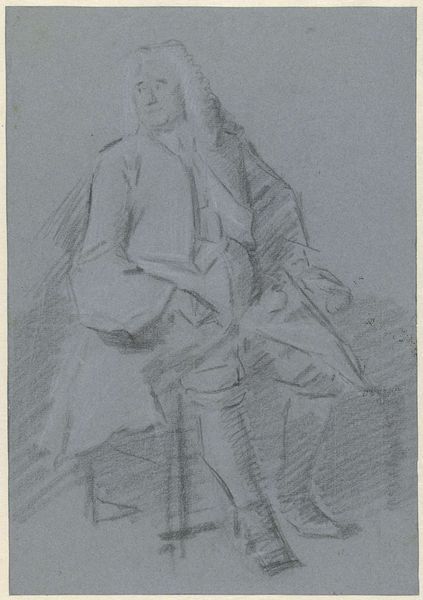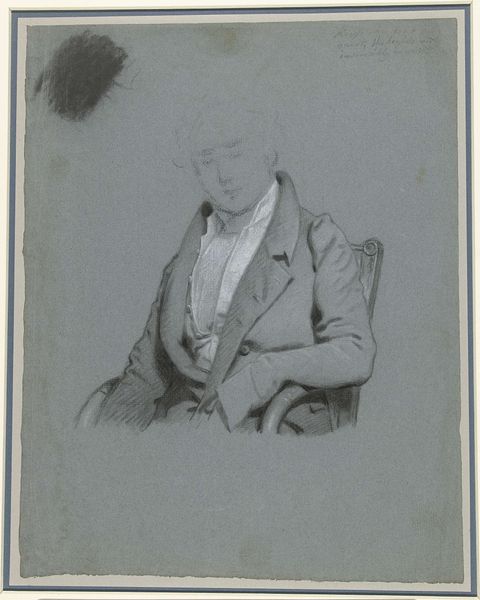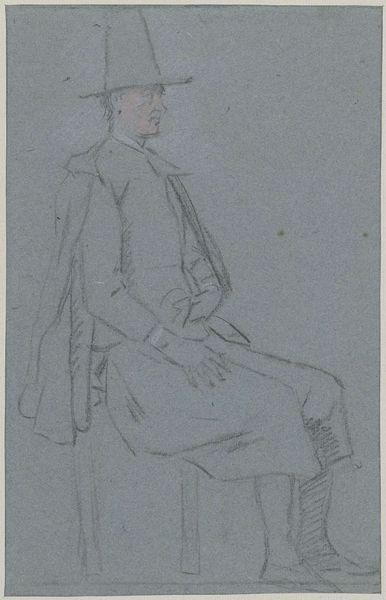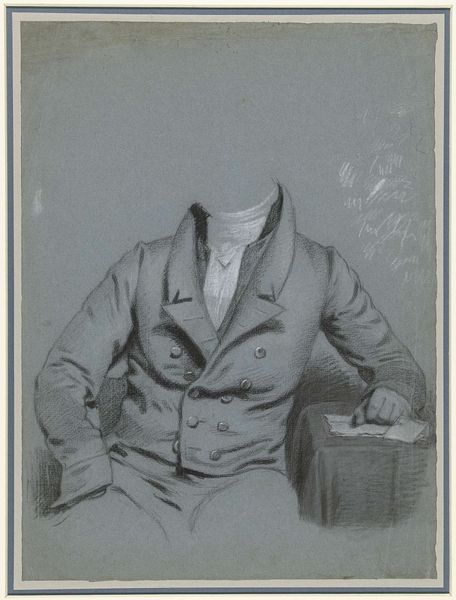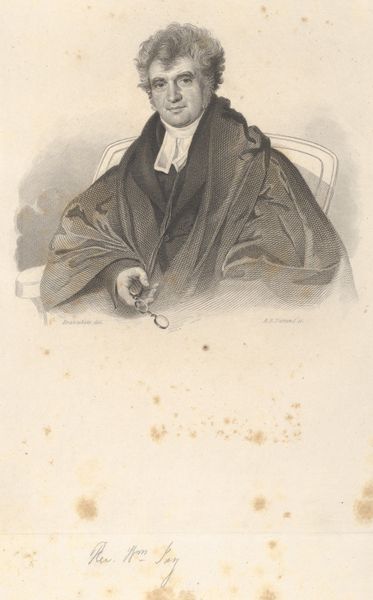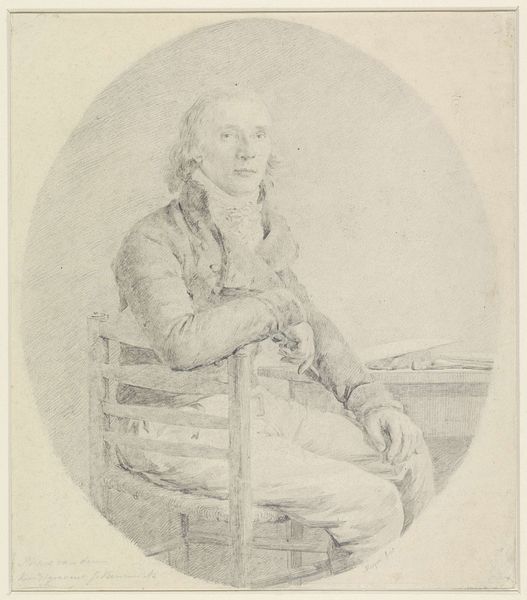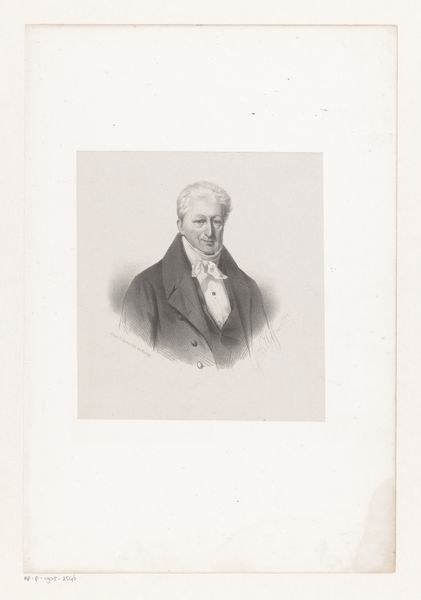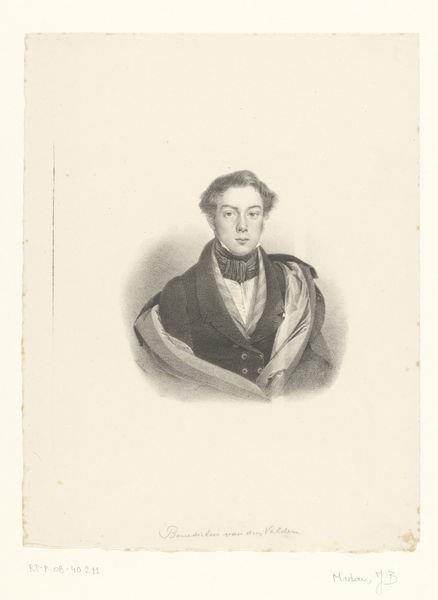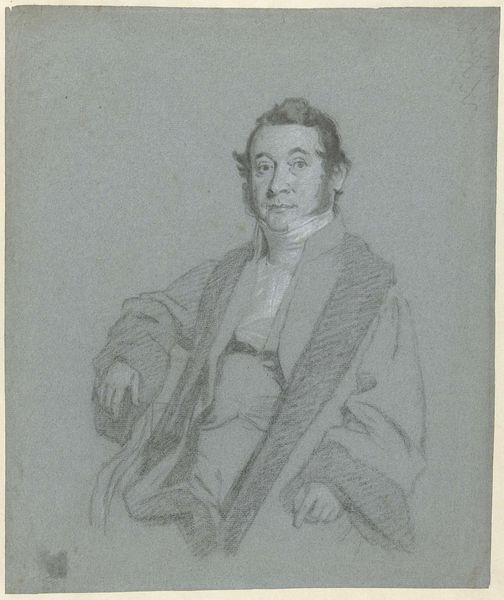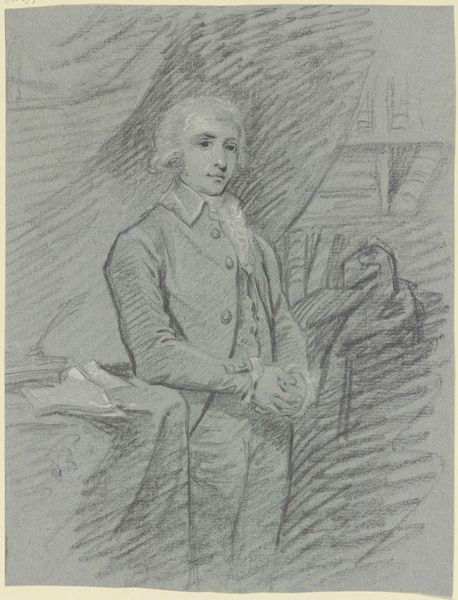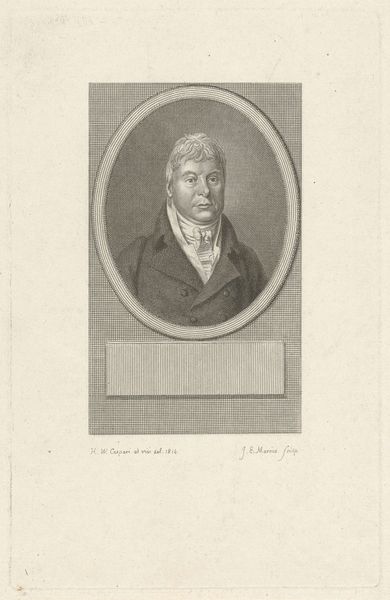
drawing, pencil
#
portrait
#
drawing
#
neoclacissism
#
pencil sketch
#
pencil
#
genre-painting
#
academic-art
Dimensions: height 276 mm, width 221 mm
Copyright: Rijks Museum: Open Domain
Curator: Here we have a work titled, "Schets voor portret van Jacob Houbraken", made in 1769 by Hendrik Pothoven. It’s a pencil drawing currently held here at the Rijksmuseum. Editor: Immediately, I’m struck by the incomplete quality and the delicate shading; it has a ghostly presence. It's all rendered in subtle graphite tones; quite beautiful in its incompleteness. Curator: As a study for a portrait, the incomplete nature allows us to appreciate the academic method of neoclassicism at the time, focusing on accuracy, restraint, and the study of ideal forms based on classical examples. It shows us Pothoven’s preparatory work, mapping out form and proportion. Editor: Absolutely. And what's so compelling about it is the subject and the socio-economic circumstances in which it emerges. Houbraken, a prominent engraver, likely commissioned this or agreed to sit. So it gives us a look into the art world, but more broadly, also reflects how images of prominent individuals circulated and how status was displayed and reinforced within society. The work hints to the relationship of Pothoven to his model, but in so many levels it also displays the contemporary academic climate. Curator: The emphasis on line and tonal modulation is especially noteworthy, given his classical influences, as is the controlled detail present even in this preliminary state. The work contains interesting stylistic parallels between portrait and genre works. Editor: Seeing it this way brings me to an even more specific point about this time frame; the value placed on craft and intellectual labour. Images, like this sketch, acted almost as commodities to those wealthy enough to hire them, as records, testaments and keepsakes of public figures who may have since become deceased. Pothoven’s practice captures so much history within this intimate piece. Curator: Ultimately, this drawing allows us a view into 18th century artistic process, its structure of representation, the relationship between artist and sitter, and the broader cultural landscape. Editor: A really revealing glimpse; and so much comes through even in its unfinished state. It has the effect of both showing a practice, a portrait and the circumstances under which it was constructed.
Comments
No comments
Be the first to comment and join the conversation on the ultimate creative platform.
